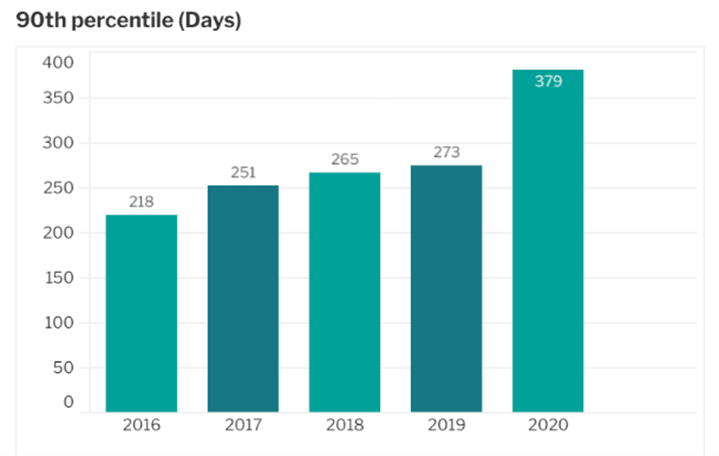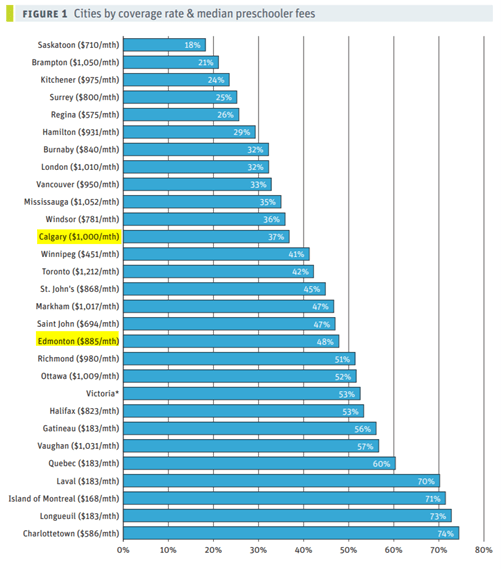[et_pb_section fb_built=”1″ _builder_version=”4.7.0″ custom_margin=”0px||0px||false|false” custom_padding=”0px||0px||false|false” global_colors_info=”{}”][et_pb_row column_structure=”3_4,1_4″ use_custom_gutter=”on” _builder_version=”4.7.7″ _module_preset=”default” width=”100%” custom_margin=”0px||||false|false” custom_padding=”0px||0px||false|false” border_width_bottom=”1px” border_color_bottom=”#a6c942″ global_colors_info=”{}”][et_pb_column type=”3_4″ _builder_version=”4.7.0″ _module_preset=”default” global_colors_info=”{}”][et_pb_post_title meta=”off” featured_image=”off” _builder_version=”4.7.4″ _module_preset=”default” title_font=”||||||||” custom_margin=”||3px|||” border_color_bottom=”#a6c942″ global_colors_info=”{}”][/et_pb_post_title][/et_pb_column][et_pb_column type=”1_4″ _builder_version=”4.7.0″ _module_preset=”default” global_colors_info=”{}”][et_pb_image src=”https://edmontonsocialplanning.ca/wp-content/uploads/2020/12/COLOUR-BLOCKS_spaced-300×51.png” title_text=”COLOUR BLOCKS_spaced” align=”center” _builder_version=”4.7.7″ _module_preset=”default” max_width=”100%” max_height=”75px” custom_margin=”0px|0px|0px|0px|false|false” custom_padding=”10px|0px|20px|0px|false|false” global_module=”96648″ global_colors_info=”{}”][/et_pb_image][/et_pb_column][/et_pb_row][et_pb_row column_structure=”3_4,1_4″ use_custom_gutter=”on” make_equal=”on” _builder_version=”4.7.7″ background_size=”initial” background_position=”top_left” background_repeat=”repeat” width=”100%” custom_margin=”0px|auto|0px|auto|false|false” custom_padding=”30px|0px|0px|0px|false|false” global_colors_info=”{}”][et_pb_column type=”3_4″ _builder_version=”4.5.6″ custom_padding=”0px|0px|0px|0px|false|false” global_colors_info=”{}” custom_padding__hover=”|||”][et_pb_text _builder_version=”4.7.5″ _dynamic_attributes=”content” _module_preset=”default” text_font=”|600|||||||” text_text_color=”#2b303a” custom_padding=”||32px|||” global_colors_info=”{}”]@ET-DC@eyJkeW5hbWljIjp0cnVlLCJjb250ZW50IjoicG9zdF9kYXRlIiwic2V0dGluZ3MiOnsiYmVmb3JlIjoiIiwiYWZ0ZXIiOiIiLCJkYXRlX2Zvcm1hdCI6ImRlZmF1bHQiLCJjdXN0b21fZGF0ZV9mb3JtYXQiOiIifX0=@[/et_pb_text][et_pb_text _builder_version=”4.14.4″ text_text_color=”#2b303a” header_2_font=”||||||||” header_2_text_color=”#008ac1″ header_2_font_size=”24px” background_size=”initial” background_position=”top_left” background_repeat=”repeat” width=”100%” module_alignment=”left” custom_margin=”0px|0px|0px|0px|false|false” custom_padding=”25px||||false|false” hover_enabled=”0″ locked=”off” global_colors_info=”{}” sticky_enabled=”0″]
Carrie-Anne Cyre, ESPC Volunteer
This report by Rishika Wadehra, Equal Rights for Migrant Care Workers: The case for Immigration Policy Transformation, was published by the Canadian Centre for Policy Alternatives (CCPA) in October 2021. Wadehra is the 2021 McInturff Fellow at CCPA. This report outlines how Canada has followed a global trend, since 1950, toward sourcing labour from the Global South to meet an ever-growing demand for care work. The author maintains that this shift in labour sourcing has created a highly racialized, predominantly female workforce of highly vulnerable individuals in Canada. This migrant workforce faces various barriers to work and residency despite updates to migrant and foreign worker policy over the years. This population has also been dramatically affected by the COVID-19 pandemic. This report communicates the urgent need for immigration policy reform, focusing on the current plight of migrant care workers in Canada during the pandemic.
According to the author, migrant care workers are particularly vulnerable to abuse and exploitation under Canadian immigration and migrant labour laws. Policies can limit migrant workers’ ability to change jobs or job sectors, use social services, or speak out against poor working conditions. Even though many migrant care workers have a high level of education, care work is generally low-pay with average (median) nationwide wages about $15 an hour.
Wadehra highlights how the pandemic has particularly affected the lives and livelihoods of migrant workers in Canada in many ways, including the following:
- Job losses to this population have been substantial due to COVID-19, and migrant workers depend on employment for their residency status.
- Migrants may be assigned additional duties without extra time or compensation. This labour intensification is even more widespread for live-in care workers who may not have a clear line between work and domestic responsibilities. This has been common during COVID-19 as many schools and workplaces have closed sporadically.
- The families of migrant workers outside of Canada may suffer from care worker job loss or pay decrease as they often depend on the wages sent home (remittances). The pandemic has led to increased job loss, pay reductions, and delays with global communication.
- Migrants have reported hiding health issues to avoid conflict or dismissal by employers. Care workers have reported not being allowed to leave the house to buy food, see family, or visit their doctor. One in three surveyed migrant care workers described being denied access outside of the home/ workplace by their employer during the pandemic.
- Navigating online applications and residency and CERB paperwork was made extremely difficult due to pandemic-related closures of institutions such as Service Canada and increased wait times for many services.
- The pandemic has increased wait times for family reunification and made travel very difficult or impossible.
The author urgently calls for two changes to migrant and immigrant worker programs:
- Abolish all existing caregiver immigration programs and replace them with more general immigration policies that favour immigrants with a range of skills.
- Provide all future migrants with permanent resident status immediately upon arrival in Canada. Removing the additional pressure of applying for permanent residency would help migrant workers to protect themselves from labour exploitation and give them more choice and agency in their lives.
Changing Canadian migrant worker policy cannot happen overnight. The author has asked that the Canadian government consider the following minor changes in the short-term, while working towards updating migrant policy based on the above recommendations.
- Grant all migrant workers open work permits, which would allow them opportunities to change employers or labour sectors without jeopardizing residency.
- Increase funding for immigrant and migrant settlement agencies, as well as provide more funding for migrant-specific legal services.
- Remove the education and language barriers to permanent resident status.
- Collect and share race-based data with the public to help better understand the issues and inform future policy decisions.
Wadehra has provided a well-researched and compelling case for Canada to update its immigrant and migrant worker policies. This largely invisible workforce has been subject to labour exploitation and experiences many barriers to services enjoyed by Canadians. The pandemic has only deepened the need for updated immigration and migrant policies to protect all foreign workers in Canada. While Wadehra provides a good argument and supportive evidence, the barriers to truly understanding the needs of the migrant worker population are significant. This highlights the need for more research and engagement with this population. However, despite the limited data, I feel persuaded that a genuinely transformative immigration policy is worth pursuing. Improved migrant worker and immigration policies could ensure the safe and equitable treatment of all workers in Canada during significant events, such as a global pandemic, and beyond.
Wadehra, R. (2021). Equal rights for migrant care workers. Canadian Centre for Policy Alternatives. https://www.policyalternatives.ca/publications/reports/equal-rights-migrant-care-workers
You can read more research report reviews in the latest edition of Research Update
ESPC volunteer Carrie-Anne Cyre is a public health student and currently working on her master’s degree. She has been volunteering in her community for over a decade, including the UncoverOliver Working Group. When she isn’t studying or volunteering, Carrie-Anne loves travel (pre- and hopefully post-COVID), coffee, and enjoying nature.
[/et_pb_text][/et_pb_column][et_pb_column type=”1_4″ _builder_version=”4.7.4″ custom_padding=”0px|20px|0px|20px|false|false” border_color_left=”#a6c942″ global_colors_info=”{}” custom_padding__hover=”|||”][et_pb_testimonial author=”Posted by:” job_title=”@ET-DC@eyJkeW5hbWljIjp0cnVlLCJjb250ZW50IjoicG9zdF9hdXRob3IiLCJzZXR0aW5ncyI6eyJiZWZvcmUiOiIiLCJhZnRlciI6IiIsIm5hbWVfZm9ybWF0IjoiZGlzcGxheV9uYW1lIiwibGluayI6Im9uIiwibGlua19kZXN0aW5hdGlvbiI6ImF1dGhvcl93ZWJzaXRlIn19@” portrait_url=”@ET-DC@eyJkeW5hbWljIjp0cnVlLCJjb250ZW50IjoicG9zdF9hdXRob3JfcHJvZmlsZV9waWN0dXJlIiwic2V0dGluZ3MiOnt9fQ==@” quote_icon=”off” portrait_width=”125px” portrait_height=”125px” disabled_on=”on|off|off” _builder_version=”4.7.7″ _dynamic_attributes=”job_title,portrait_url” _module_preset=”default” body_text_color=”#000000″ author_font=”||||||||” author_text_align=”center” author_text_color=”#008ac1″ position_font=”||||||||” position_text_color=”#000000″ company_text_color=”#000000″ background_color=”#ffffff” text_orientation=”center” module_alignment=”center” custom_margin=”0px|0px|4px|0px|false|false” custom_padding=”32px|0px|0px|0px|false|false” global_colors_info=”{}”][/et_pb_testimonial][et_pb_text disabled_on=”on|off|off” _builder_version=”4.7.7″ _dynamic_attributes=”content” _module_preset=”default” text_text_color=”#000000″ header_text_align=”left” header_text_color=”rgba(0,0,0,0.65)” header_font_size=”20px” text_orientation=”center” custom_margin=”||50px|||” custom_padding=”48px|||||” global_colors_info=”{}”]@ET-DC@eyJkeW5hbWljIjp0cnVlLCJjb250ZW50IjoicG9zdF9jYXRlZ29yaWVzIiwic2V0dGluZ3MiOnsiYmVmb3JlIjoiUmVsYXRlZCBjYXRlZ29yaWVzOiAgIiwiYWZ0ZXIiOiIiLCJsaW5rX3RvX3Rlcm1fcGFnZSI6Im9uIiwic2VwYXJhdG9yIjoiIHwgIiwiY2F0ZWdvcnlfdHlwZSI6ImNhdGVnb3J5In19@[/et_pb_text][/et_pb_column][/et_pb_row][/et_pb_section]






